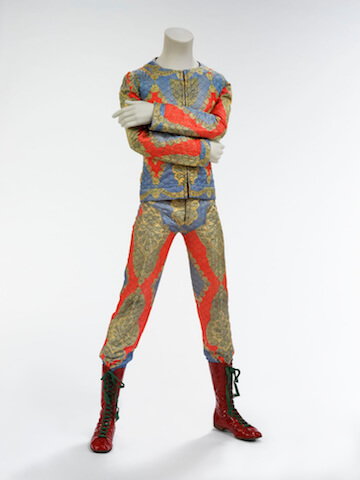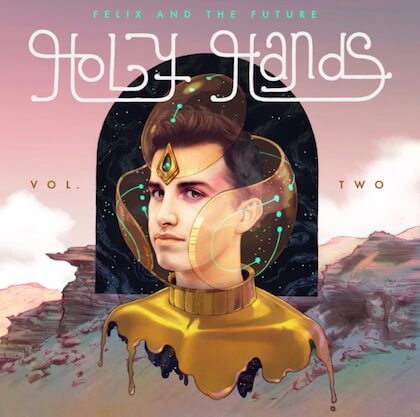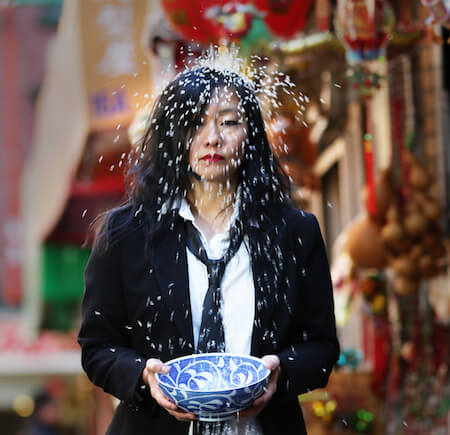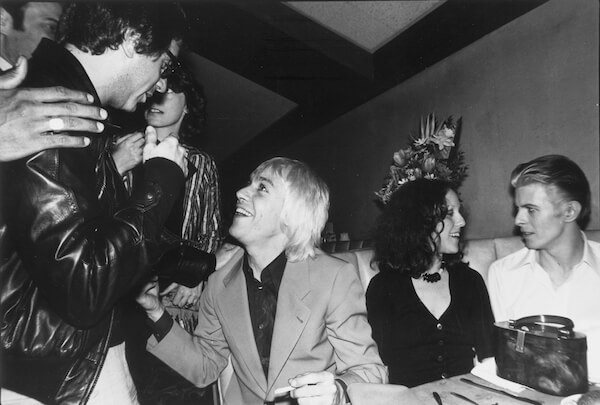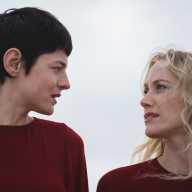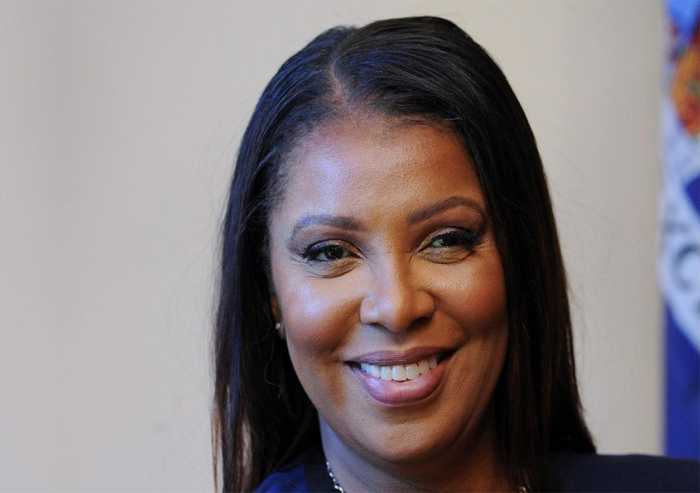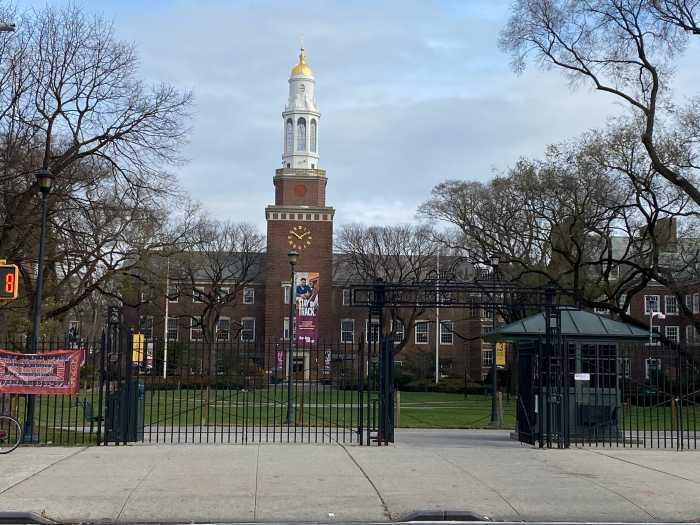Elsa Lanchester and Boris Karloff in James Whale’s “Bride of Frankenstein.” | COURTESY: METROGRAPH
The 30-film series “Goth(ic)” at the Metrograph in December showcases many gothic films by, for, or about the queer community. From James Whale’s “The Bride of Frankenstein,” to Ken Russell’s “Gothic,” these horror shows share a heady combination of eroticism and chills that unfold in an atmosphere of decay and degeneration, often featuring supernatural elements. Here are some notable queer entries in the program:
“The Bride of Frankenstein” (Dec. 3, 1:15 & 10:15 p.m.)
Gay filmmaker James Whale’s 1935 film, a sequel to his hit “Frankenstein,” opens with original author Mary Wollstonecraft Shelley (Elsa Lanchester) explaining that her story is not over. After a handy recap, she reveals that Dr. Henry Frankenstein’s (Colin Clive) Monster (Boris Karloff, in an iconic role) is not dead. What’s more, Dr. Septimus Pretorius (Ernest Thesiger) — described by Frankenstein’s housekeeper Minnie (Una O’Connor) as “a queer looking gent” — has insisted to Frankenstein that the Monster needs a mate! So the doctors play God and create a bride.
But before the title character appears, the Monster falls victim to xenophobia as a shepherdess (Ann Darling) and other fearful townsfolk persecute him.
Metrograph offers a month of truly queer ghoul
Whale’s film is fantastic and essential queer gothic. He exquisitely uses light and shadow to highlight the actors’ faces and creates a marvelously eerie atmosphere in mist-covered moors. The climatic episode in the lab is a corker, thanks in part to Lanchester’s mesmerizing performance as the Bride.
Udo Kier in Paul Morrissey’s “Blood for Dracula.” | COURTESY: METROGRAPH
“Blood for Dracula” (Dec. 17, 6 p.m.)
Paul Morrissey’s highly entertaining 1974 film has Udo Kier playing arguably the most louche and campiest Dracula ever to grace the screen. The Count needs virgin blood. So he heads — coffin in tow — to Italy to prey on an aristocratic Catholic family that has fallen on hard times.
The greedy Marchesa (Maxime McKendry), seeing potential wealth, is pleased to offer her four daughters for marriage. Unbeknownst to the Count, however, Mario (Joe Dallesandro), the strapping family servant, has been deflowering the young women.
The film is more sexy than scary, thanks to the hunky Dallesandro’s bare-assed presence, and scenes of the two eldest daughters, Saphiria (Dominique Darel) and Rubinia (Stefania Casini), kissing, canoodling, and baring their breasts throughout. The bloodletting is also more funny than gory — from Keir convulsing and vomiting blood to limbs being dismembered. “Blood for Dracula” is a queer (read: peculiar) take on the gothic Stoker story, but that is why it is so — if you’ll pardon the pun — delicious.
“Fascination” (Dec. 10, 3:15 p.m.)
Also from the 1970s, and also about a stranger entering a house, is “Fascination,” Jean Rollin’s erotic period thriller. Marc (Jean-Pierre Lemaire) is a handsome thief on the run in 1905 who thinks he can hide out in a chateau. Yet Elizabeth (Franka Mai) and Eva (Brigitte Lahaie) — the two women he finds inside — have other plans. As a series of reversals of fortunes occur, Elizabeth and Eva introduce Marc to “a universe of madness and death.” Eva seduces Marc to introduce him to a group of aristocratic ladies who arrive at night for a secret ceremony. However, she is more aroused by Elizabeth; the women have a lovely soft-core encounter. “Fascination” is at times bloody and baroque, but it remains intriguing even if there are few surprises in how the story will play out.
Susan Sarandon and Catherine Deneuve in Tony Scott’s “The Hunger.” | COURTESY: METROGRAPH
“The Hunger” (Dec. 17, 1:30 p.m.)
From 1983, this incredibly stylish film is best appreciated for the scenes of John (David Bowie) aging rapidly and Miriam (Catherine Deneuve) having sex with Sarah (Susan Sarandon). Tony Scott, in his directorial debut, films this beguiling — if, no doubt, baffling to some — gothic romance, with shadows in every frame, bundles of billowing curtains, flocks of doves, and smoke plumes all of which create an atmosphere of utter decay. When Sarah, a gerontologist, ignores John’s request for a consultation, he dies, leaving Miriam, a vampire, in need of fresh blood. She sets her sights on Sarah, making a pass at her one afternoon that quickly (if risibly) leads them to exchanging saliva and blood in bed. Miriam’s blood is quite powerful, and not quite human — but it does grant eternal youth, or at least eternal life. Given the AIDS scare at the time the film was made, this was a potentially interesting metaphor, but Scott is far more interested in the look of “The Hunger” than its meaning or plot.
Tom Cruise and Brad Pitt in Neil Jordan’s “Interview with the Vampire: The Vampire Chronicles.” | COURTESY: METROGRAPH
“Interview with the Vampire: The Vampire Chronicles” (Dec. 3, 5:45 p.m.)
Neil Jordan’s ambitious 1994 adaptation of Anne Rice’s bestseller features Louis (Brad Pitt), a vampire who “feels too much” and recounts his life to Malloy (Christian Slater) a reporter, in contemporary San Francisco. Louis explains how he was “born into darkness” after Lestat (Tom Cruise) sinks his teeth into Louis’ neck. The two men fly into the air in a kind of ecstasy that is either spellbinding or silly depending on viewers’ taste. There is some homoeroticism in the Lestat/ Louis scenes as well as when Armand (Antonio Banderas) turns up and has designs on Louis. However, while much of “Interview with the Vampire” is elaborately staged and bloody, it’s campiness — such as Lestat dancing with a corpse — undercuts its earnestness.
“Gothic” (Dec. 10, 5:30 & 9:45 p.m.)
Ken Russell’s 1986 horror film about Lord Byron (Gabriel Byrne), Percy Bysshe Shelley (Julian Sands), and Mary Shelley (Natasha Richardson) in a villa during a dark and stormy night, is a fast-paced thrill ride that features goofy spectacle and copious screaming. The characters, which include the gay Dr. Polidori (Timothy Spall), conjure up a handful of waking nightmares after conducting a séance.
There are several episodes of same-sex affections and plenty of arresting images — Sands naked on a rooftop in the rain among them. The characters may go mad over the course of their wild, debauched night, but none goes madder than Russell, who directs “Gothic” in his patented over-the-top style.
Jonathan Schaech, Rose McGowan, and James Duval in Gregg Araki’s “The Doom Generation.” | COURTESY: METROGRAPH
“The Doom Generation” (Dec. 8, 2:15 & 7 p.m.)
New Queer Cinema icon Gregg Araki dubbed his 1995 film “The Doom Generation” his “heterosexual movie.” It opens with a signpost that reads, “Welcome to Hell.” (The end credits also indicate the film was “shot on location in Hell.”) There are numerous verbal and visual references to skulls, skeletons, and the number 666.
A lovers-on-the-run road movie, the film has foul-mouthed teens Amy Blue (Rose McGowan) and Jordan White (James Duval), her wishy-washy boyfriend of three months, encountering murder and mayhem after they pick up the sexy Xavier Red (Jonathan Schaech). Amy thinks there is “something evil” about X, as he’s called, and while she may be right, she fucks him repeatedly anyway. Jordan doesn’t seem to mind; he and X have some palpable sexual tension between them, as well. “The Doom Generation” comments on teen angst with pop culture references, celebrity cameos, and nihilistic violence. The colors are vivid and the soundtrack is fabulous, filled with ‘90s goth bands, but a little of Araki’s early anarchy goes a long way these days.
Other films with queer threads in the series include: Alfred Hitchcock’s 1940 classic “Rebecca” (Dec. 3, 3 p.m.), which features Judith Anderson as Mrs. Danvers, a repressed lesbian who is extremely devoted to the deceased title character; the 1963 version of “The Haunting” (Dec. 10, 1 & 5:15 p.m.), where Claire Bloom plays a medium who clearly has a thing for Julie Harris; the 1968 entry “The Devil Rides Out” (Dec. 10, 1:15 p.m.), in which a young man is in the thrall of an older male Satanist; “Cemetery Man” (Dec. 9, 3:30 p.m.) from 1994, which features out actor Rupert Everett fighting zombies; and gay filmmaker Andrew Fleming’s 1996 flick, “The Craft” (Dec. 1, 3:15 p.m.) about outcast teen witches.
Rupert Everett in Michele Soavi’s “Cemetery Man.” | COURTESY: METROGRAPH
GOTH(IC) | Metrograph | Series opens Dec. 1 | 7 Ludlow St., btwn. Hester & Canal Sts. | metrograph.com








